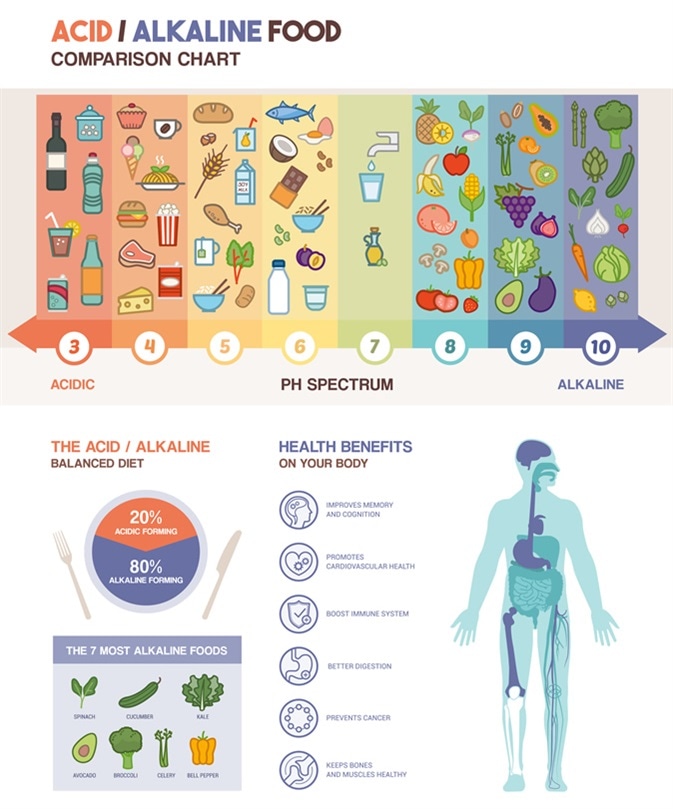Launching 1st March 2023. Also check out: https://www.thailandmedical.news/
Also called the acid-alkaline diet or the alkaline ash diet, this eating plan is based on the consumption of alkaline-forming foods in place of acid-forming foods.
Proponents of the diet argue that this can improve health and extend lifespan, since eating acid-producing foods such as red meat gives rise to a pH imbalance that sets us up for poor health.
The idea is that a person can control the acidity or alkalinity of their body through the foods they consume. When food is metabolised to extract calories, the food is burnt, leaving an ash residue that may be acidic, alkaline or neutral. Advocates of the alkaline diet claim that this ash can affect how acidic the body is and that acidic ash increases susceptibility to disease. Alkaline ash, on the other hand, they believe is protective and that by “alkalizing” the diet and balancing the body’s pH, it is possible to improve health.
The food eaten includes vegetables, fruits, almonds, lentils, soy products, tofu and sprouted grains. Approximately 80% of foods should be alkalizing foods and 20% can be acid forming; a rule that is applied to every meal and drink.

Examples of acid-forming foods (pH0 to 7)are meats, poultry, eggs, dairy products, sugary drinks, snacks, wheat products, coffee, mayonnaise, milk, alcohol and ketchup; examples of neutral foods (ph7) are natural fats, sugars and starches and examples of alkaline foods (pH 7 to 14) are vegetables, legumes, fruits and nuts.
Some of the advantages and disadvantages of following this diet are described below.